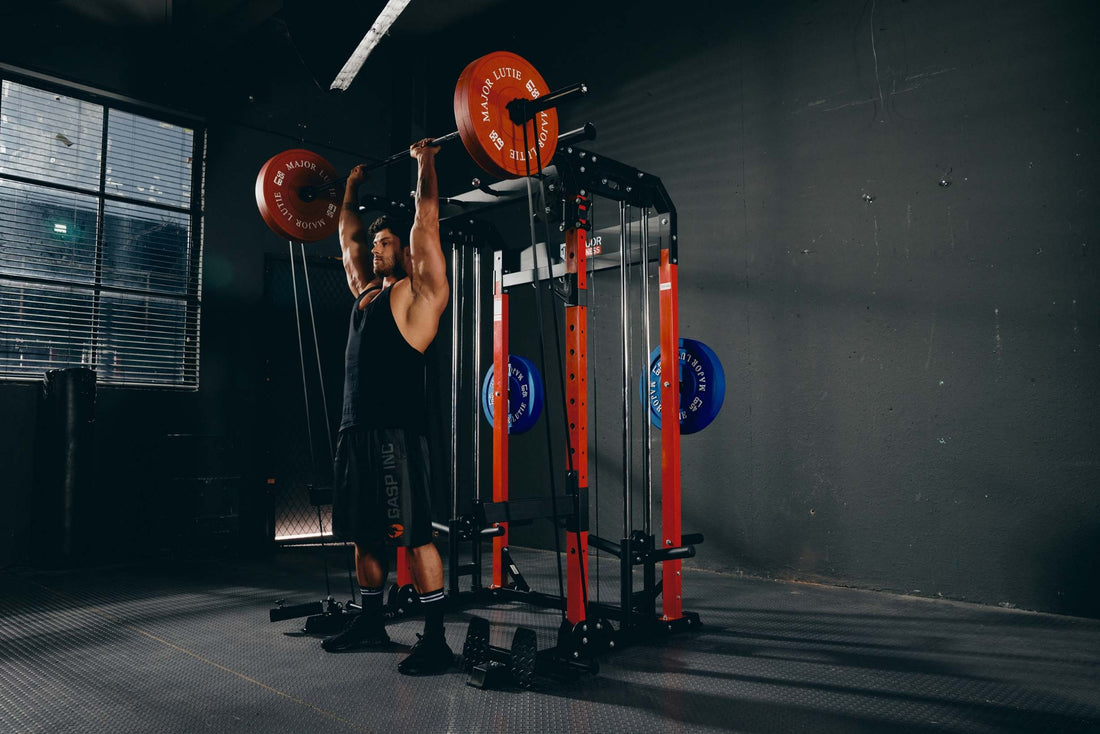
In the realm of fitness and muscle building, there are numerous training approaches to choose from. Among these, a unique and highly effective method has been gaining popularity: power building. What is power building, and why should you consider incorporating it into your fitness regimen? This article aims to unravel the mysteries of power building, elucidate its benefits, and provide a comprehensive guide on how to get started.
The Concept of Power Building
Power building is a hybrid training approach that combines elements of powerlifting and bodybuilding. While powerlifting focuses on maximizing strength through compound movements like the squat, bench press, and deadlift, bodybuilding emphasizes muscle hypertrophy and aesthetics. By blending these two disciplines, power building aims to produce a balanced physique that is both strong and muscular.
The Main Objectives
Mainly, power building has two primary objectives:
- Strength Development: Incorporating heavy lifting to increase overall strength.
- Muscle Hypertrophy: Employing varied rep ranges and exercises to maximize muscle growth.
Benefits of Power Building
The advantages of power building are manifold and include physical, mental, and performance-related benefits:
Balanced Physique
By integrating both powerlifting and bodybuilding methods, power building ensures a harmonious development of strength and muscle mass. This results in a well-rounded, symmetrical body.
Enhanced Strength
With a strong emphasis on heavy compound lifts, power building significantly boosts your strength levels, translating into better performance in various activities beyond the gym.
Improved Aesthetics
Thanks to the bodybuilding component of this training style, power building ways incoporate higher rep ranges and isolation exercises aimed at muscle hypertrophy, which improve muscle definition and symmetry.
Mental Resilience
The demanding nature of power building workouts fosters mental toughness and discipline, qualities that are not only beneficial in the gym but also in daily life.
Basic Elements of a Power Building Routine
Designing a power building routine isn’t overly complicated, but it does require a balanced approach. Here are some key components:
Heavy Compound Movements
Core lifts like the squat, bench press, and deadlift should be the cornerstone of your training program. These exercises are performed at lower rep ranges (1-5 reps) to maximize strength gains.
Accessory and Isolation Exercises
To complement the compound movements, include accessory exercises targeting specific muscles. These are generally performed in higher rep ranges (8-15 reps) to stimulate muscle growth.
Periodization
Cycling through different phases such as hypertrophy, strength, and deload periods ensures continuous progress and helps prevent plateaus. For example, you might spend a few weeks focusing on higher volume and lighter weights, followed by a few weeks of lower volume and heavier weights.

Rest and Recovery
Given the intensity of power building workouts, adequate rest and recovery are crucial. This includes not only proper sleep and nutrition but also incorporating rest days into your routine.
To support strength training, you can use Major Fitness's Power Rack and Olympic barbell. The Power Rack provides stable and safe support, suitable for a variety of strength training such as squats and bench presses; the Olympic barbell is sturdy and durable, supports high-intensity training, and is an ideal choice for comprehensively improving strength and muscle mass.
Sample Power Building Routine
For those eager to dive into power building, here’s a sample week-long routine:
Day 1: Lower Body (Strength)
- Squats: 4 sets of 3-5 reps
- Deadlifts: 3 sets of 3-5 reps
- Leg Press: 3 sets of 8-10 reps
- Hamstring Curls: 3 sets of 8-12 reps
- Calf Raises: 4 sets of 15 reps
Day 2: Upper Body (Strength)
- Bench Press: 4 sets of 3-5 reps
- Overhead Press: 3 sets of 3-5 reps
- Barbell Rows: 3 sets of 6-8 reps
- Pull-Ups: 3 sets to failure
- Tricep Dips: 3 sets of 8-12 reps
Day 3: Rest or Active Recovery
Day 4: Lower Body (Hypertrophy)
- Squats: 4 sets of 8-12 reps
- Leg Extensions: 3 sets of 10-15 reps
- Stiff-Leg Deadlifts: 3 sets of 8-12 reps
- Lunges: 3 sets of 10-12 reps per leg
- Seated Calf Raises: 4 sets of 15-20 reps
Day 5: Upper Body (Hypertrophy)
- Incline Bench Press: 4 sets of 8-12 reps
- Seated Dumbbell Press: 3 sets of 10-15 reps
- Cable Rows: 3 sets of 10-12 reps
- Bicep Curls: 3 sets of 15 reps
- Tricep Pushdowns: 3 sets of 15 reps
Day 6: Rest or Active Recovery
Day 7: Full-Body (Mixed)
- Deadlifts: 3 sets of 5 reps
- Dumbbell Press: 3 sets of 8 reps
- Lat Pulldown: 3 sets of 10 reps
- Leg Press: 4 sets of 10 reps
- Ab Circuit: 3 sets of various ab exercises
Nutrition and Supplementation
For optimal results in power building, a well-rounded nutrition plan is indispensable. Focus on:
Protein Intake
Consume adequate protein to support muscle repair and growth. Aim for 1.2 to 2 grams of protein per kilogram of body weight.
Carbohydrates
Carbohydrates serve as the primary energy source for your workouts. Ensure you’re consuming enough to fuel your intense training sessions.
Fats
Include healthy fats to support overall health and hormone production.
Supplements
Consider supplements like whey protein, creatine, and branched-chain amino acids (BCAAs) to support your training and recovery needs.
If you’re seeking a training regimen that offers the best of both worlds—strength and aesthetics—power building is certainly worth a try. Its balanced approach ensures you not only look good but also perform at your best. With consistency, smart training, and proper nutrition, power building can help you achieve remarkable results.
Ready to embark on your power building journey? Equip yourself with the right knowledge, stay dedicated, and watch as you transform into the best version of yourself both in and out of the gym.



















